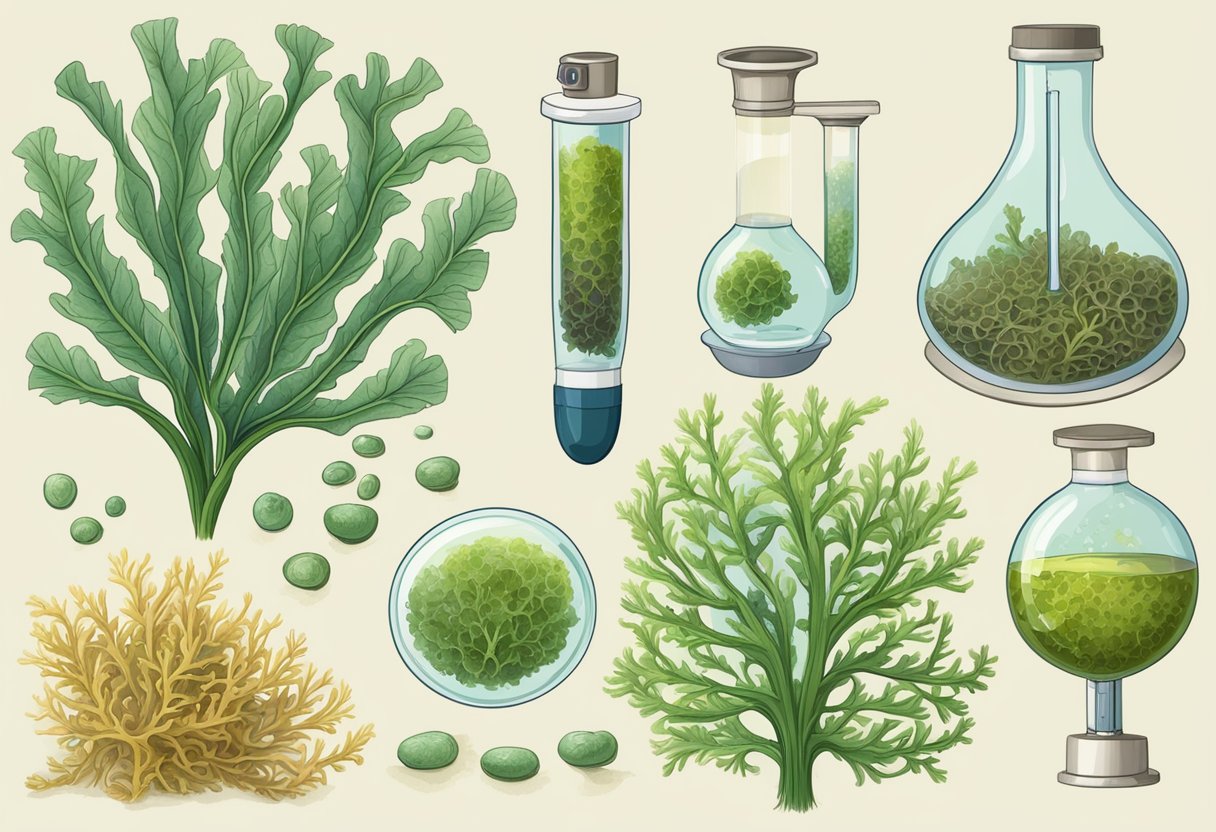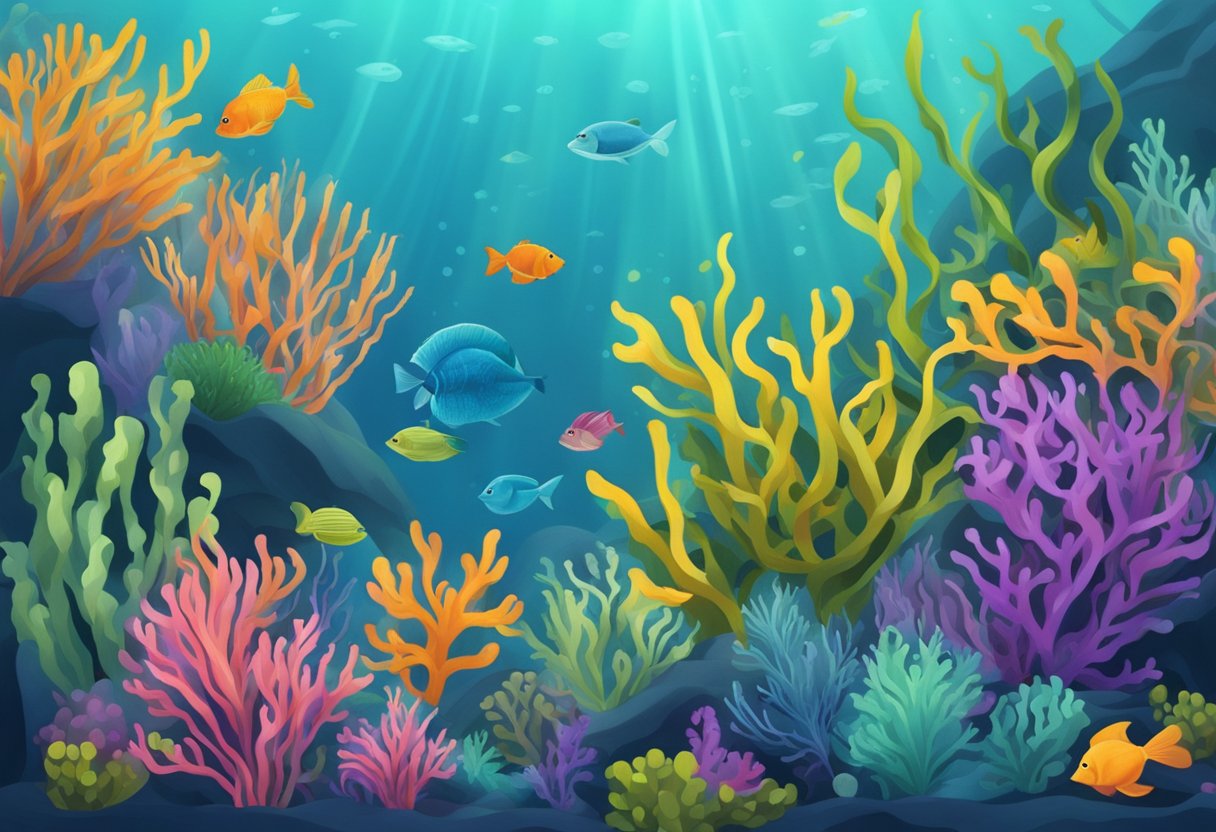Seaweed has long intrigued both scientists and nutritionists for its unique properties and potential health benefits. It is often associated with being a plant due to its green appearance and growth in aquatic environments. Yet, this classification is a common misconception because seaweeds are actually algae. Algae are a diverse group of photosynthetic organisms that are not true plants, which raises the question: is seaweed classified as a protist?
Protists are a kingdom composed of mostly single-celled organisms that cannot be classified as animals, plants, or fungi. They are known for their varied cellular structures and modes of reproduction. Seaweed, on the other hand, is multicellular, making its classification more complex. Certain seaweeds share characteristics with protists, such as eukaryotic cells and the ability to thrive in moist or aquatic habitats. However, the definitive categorization needs a more detailed analysis of seaweed's biological features and its lineage within the tree of life.

Key Takeaways
- Seaweed is often mistaken for a plant but is actually a type of algae.
- Protists are a diverse kingdom primarily consisting of single-celled eukaryotic organisms.
- The classification of seaweed as a protist requires a nuanced understanding of its cellular structure and taxonomy.
Classification of Seaweed

Seaweed is grouped within various kingdoms of life and exhibits a complex taxonomy reflective of its diverse species.
Kingdoms of Life
Seaweed generally belongs to one of three different kingdoms:
- Chromista: This includes brown algae, such as the kelps.
- Plantae: Represented predominantly by green algae.
- Protista: Home to the red algae.
Each of these kingdoms contains eukaryotic organisms, which are characterized by having a nucleus enclosed within membranes.
Seaweed Taxonomy
The taxonomy of seaweed is intricate due to its diverse nature. Here is a simplified outline focusing on higher levels of classification:
-
Phylum: Seaweed is categorized into distinct phyla based on pigmentation, storage products, and other cellular characteristics.
- Phaeophyceae (Brown Algae)
- Chlorophyta (Green Algae)
- Rhodophyta (Red Algae)
- Class, Order, Family, Genus, Species: These classifications become progressively more specific as one descends the hierarchy.
Marine biologists utilize this taxonomy to classify and study the various seaweed species, reflecting an array of adaptations and evolutionary paths within their respective environments.
Characteristics of Protists

Protists exhibit a diverse array of characteristics, primarily due to being a very broad group of organisms. They straddle the divide between simple single-celled organisms and complex multicellular life forms.
Cellular Structure
Protists can be unicellular or multicellular. Unicellular protists, such as amoeba, exhibit complex internal structures, with functions equivalent to organs in multicellular organisms. Multicellular protists, like seaweed, contain specialized cells that differentiate to perform distinct functions. Their cellular structures are often less complex than those of true plants, animals, and fungi, which sets them apart as a unique group.
Cell Type: Eukaryotic
Cell Complexity: Ranges from simple to complex
Number of Cells: Can be unicellular or multicellular
Reproduction
Protists reproduce through various methods, including both asexual and sexual reproduction. Asexual reproduction is common and often occurs by means of binary fission, where a protist splits into two parts. Sexual reproduction among protists can involve complex life cycles with alternating stages of asexual and sexual processes.
Asexual Reproduction: Typical methods include binary fission, budding, or spore formation.
Sexual Reproduction: May involve gametes, with life cycles that can include alternation of generations.
Is Seaweed a Protist - The Verdict

Seaweed does not fall under the category of protists. Protists are primarily single-celled organisms that belong to the eukaryotic domain, meaning they have a nucleus enclosed within membranes. Seaweed, on the other hand, comprises complex multicellular algae. They fall within the broader category of eukaryotes but are distinct from the protists.
Classification:
- Kingdom: Plantae or Protista (for some red and brown algae)
- Domain: Eukaryota
- Characteristic: Multicellular
One of the reasons seaweed is considered separate from protists is its level of cellular organization. It possesses organized tissues and, in many cases, even specialized structures resembling leaves and stems. The complexity of seaweeds goes beyond what is typically associated with protists.
Key Differences:
- Cellularity: Multicellular vs Single-celled
- Organization: Tissues and structures vs None
- Complexity: High vs Variable
The confusion often arises due to historical classification systems and the diversity of life forms that blur the lines between categories. However, with advancements in genetics and molecular biology, scientists can make more precise classifications. It is important to note that some red and brown algae were once classified as protists, but this is largely considered outdated.
In summary, seaweed's multicellular complexity and organized structures differentiate it from protists, which are generally characterized by simpler, single-celled organisms. Thus, seaweed is better classified within the algae subset of the Plantae kingdom or, for some specific types, within the Protista kingdom.
Frequently Asked Questions
In this section, readers will find answers to common inquiries regarding the classification and characteristics of seaweeds within the protist kingdom.
What are the characteristics that classify organisms as plant-like protists?
Plant-like protists, also known as algae, are characterized by their ability to perform photosynthesis, possession of chloroplasts, and a cell wall made of cellulose. They vary in color due to different types of pigments such as chlorophyll, which imparts a green coloration.
Can you provide examples of representative species within the protist kingdom?
Representative species within the protist kingdom include single-celled organisms like amoebas, and multicellular organisms like seaweeds and kelp. These organisms exhibit variety in form and function, showcasing the diversity of the protist kingdom.
How does algae fit into the categorization of protists?
Algae fit into the protist categorization as a diverse group of plant-like organisms that can be either unicellular or multicellular. Seaweed is an example of multicellular algae which is often complex and structurally similar to true plants but lacks vascular tissues.
What are the fundamental differences between multicellular and unicellular organisms in the context of seaweeds?
The fundamental difference between multicellular and unicellular organisms in the context of seaweeds is their organizational complexity. Multicellular seaweeds have specialized structures and functions within the organism, while unicellular algae consist of a single cell performing all life processes.
Are seaweeds considered to be prokaryotic or eukaryotic life forms?
Seaweeds are considered eukaryotic life forms as their cells contain a nucleus enveloped by a membrane, as well as other membrane-bound organelles, distinguishing them from prokaryotic cells which lack such features.
In what ways does kelp exemplify the protist classification?
Kelp exemplifies the protist classification through its multicellular structure and ability to perform photosynthesis, despite being markedly different in size and complexity from many other protists which tend to be unicellular.




